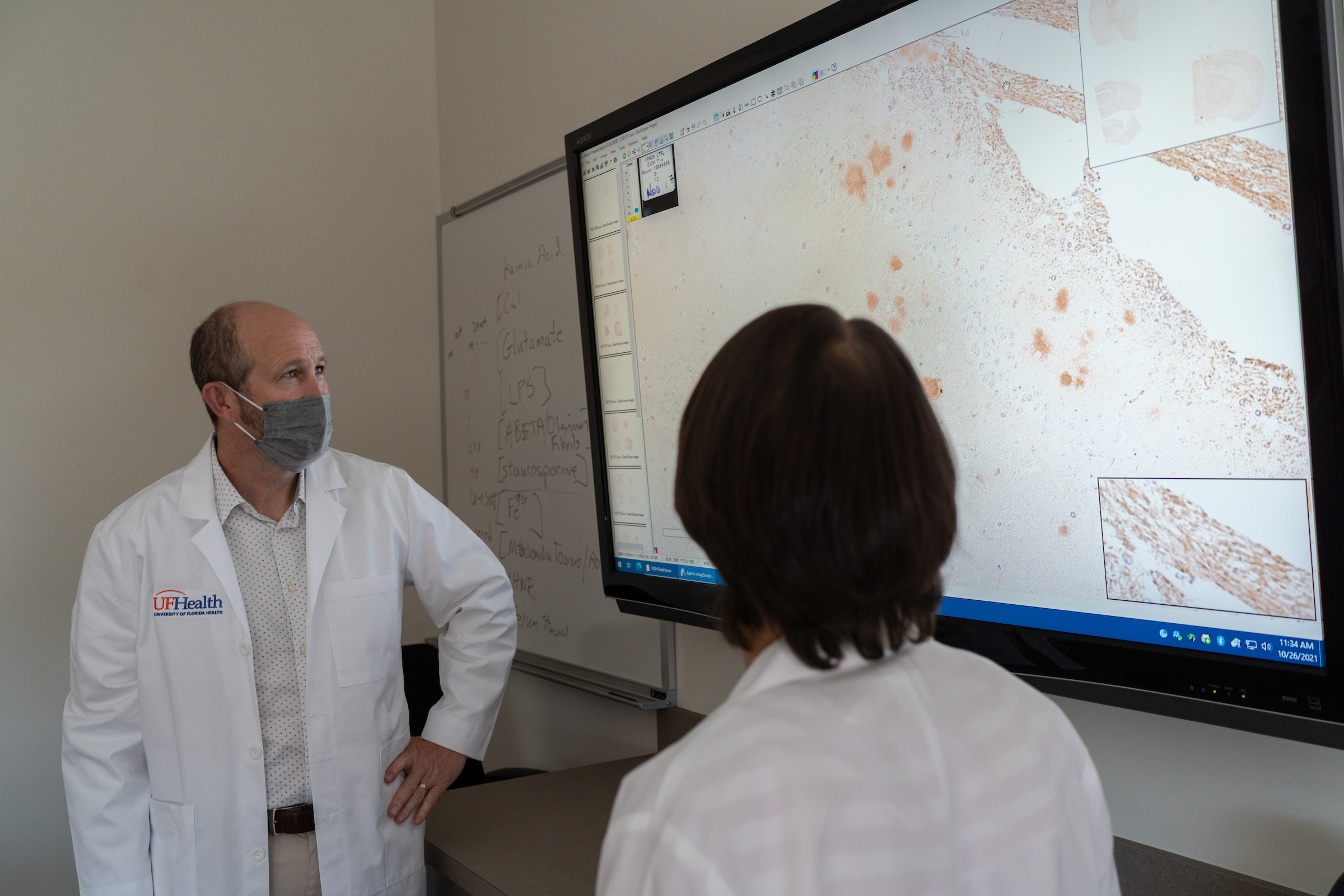By Michelle Koidin Jaffee
A new postmortem study shows that changes in the expression of genes in two specific brain regions are similar in both Alzheimer’s disease and a rare brain disorder called progressive supranuclear palsy, suggesting that certain observable changes in the human brain related to these diseases may be a result, rather than a cause, of long-term degenerative processes.

The study, published in The Journal of Clinical Investigation, was led by Nilüfer Ertekin-Taner, M.D., Ph.D., a neuroscientist and behavioral neurologist at Mayo Clinic in Florida, and Todd Golde, M.D., Ph.D., director of UF’s McKnight Brain Institute, and collaborators at Mayo Clinic in Florida, Emory University and the Institute for Systems Biology.
The research team used RNA sequencing to assess global changes in gene expression in 231 temporal cortex samples and 224 cerebellar cortex samples from patients with Alzheimer’s and progressive supranuclear palsy, or PSP, who had arranged for brain donation to the Mayo Clinic Brain Bank. Researchers compared the change in gene expression between Alzheimer’s and controls without either disease and PSP and controls.
The team reported a “striking correlation” in the directionality and magnitude of gene expression changes in samples with Alzheimer’s and progressive supranuclear palsy.
“More surprisingly, we show that in Alzheimer’s disease, these changes in gene expression patterns are very similar in an area of the brain where there is severe degeneration and pathology as well as another area of the brain where this is no visible pathology or evidence of degeneration,” Golde said. “This strongly suggests that the effects of Alzheimer’s on brain function are not just restricted to areas with pathology, but that the brain is truly in a state of organ failure at this point.”
In Alzheimer’s, the temporal cortex shows severe impacts of pathology and degeneration, while the cerebellar cortex has not been thought to degenerate, Golde said.
PSP, a rare condition that impairs movement, balance and eye gaze, and Alzheimer’s are both neurodegenerative diseases that cause proteinopathies. PSP brains show hallmark pathology of a protein called tau that abnormally accumulates inside neurons to form neurofibrillary tangles, while Alzheimer’s brains show pathologies of both tau and beta-amyloid, a protein that clumps into plaques between neurons.
“More generally, we show that the impacts of these diseases on brain function as assessed by changes in gene expression are massive and complex, indicating that in order to develop more effective treatments for Alzheimer’s, we need to understand this complexity and not just target one gene or pathway gone awry,” Golde said. “We will likely need to develop a multipronged strategy to improve brain function significantly.”
The findings suggest a need for novel biomarkers that could track changes in less affected brain regions as well as development of therapies targeted at generalized gene alterations, the researchers said.
Said Ertekin-Taner: “Our findings can be leveraged to develop multifaceted therapies and biomarkers for the complex and ubiquitous brain molecular alterations shared across these two neurodegenerative diseases.”
Read the paper in the Journal of Clinical Investigation.

